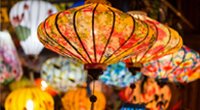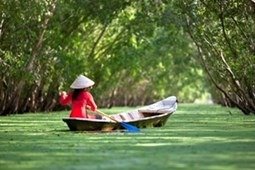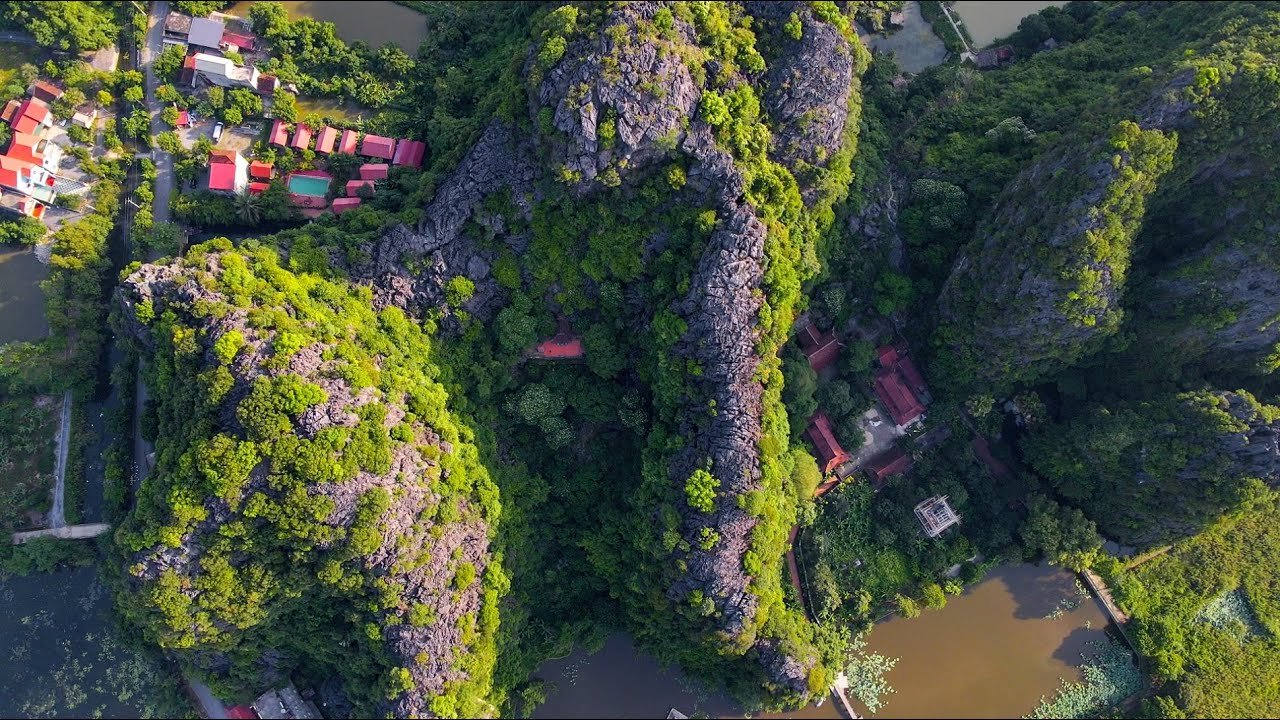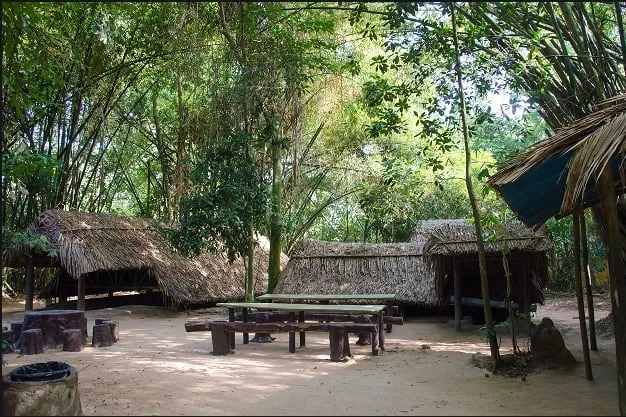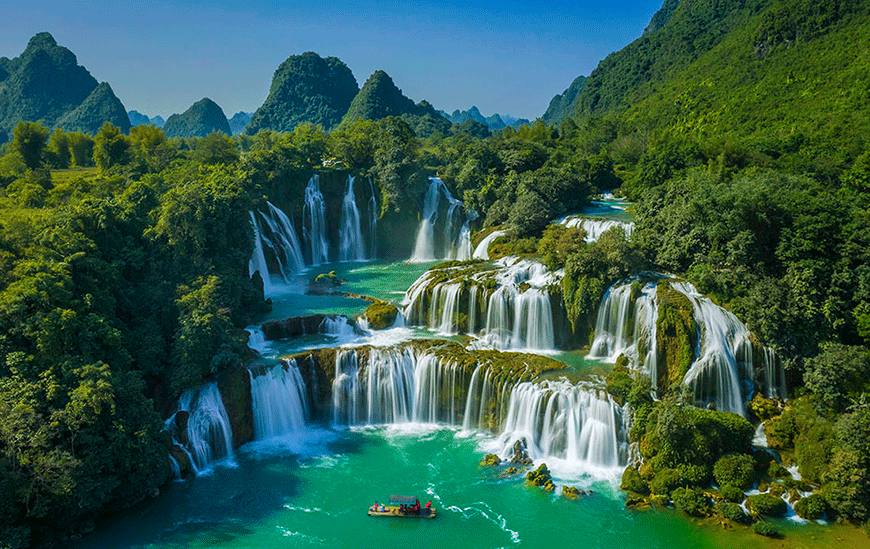Contents
ToggleWhy Visit Bich Dong Pagoda?
Bich Dong Pagoda is more than just a spiritual site—it’s a serene and atmospheric experience nestled in one of Vietnam’s most breathtaking landscapes. Located just a short ride from Tam Coc in Ninh Binh Province, this 15th-century temple complex is part of the Trang An Landscape Complex, a UNESCO World Heritage Site known for its towering karst mountains, lush rice fields, and winding waterways.
What makes Bich Dong Pagoda truly special is its unique design: the complex is built directly into the side of a limestone cliff, with three separate pagodas—Ha (Lower), Trung (Middle), and Thuong (Upper)—connected by stone steps that wind through caves and natural rock formations. As you ascend, you’ll pass mossy statues, quiet prayer halls, and viewpoints that open onto panoramic vistas of the countryside.
The journey to Bich Dong is just as memorable as the site itself. Rent a bicycle in Tam Coc and ride through peaceful villages, alongside rice paddies, lotus ponds, and water buffalo grazing in the fields. It’s an ideal half-day escape from the more tourist-heavy attractions, offering a blend of nature, culture, and calm reflection.
Visiting Bich Dong Pagoda isn’t just about seeing a historic temple—it’s about immersing yourself in Vietnam’s spiritual heritage while surrounded by the quiet majesty of nature.
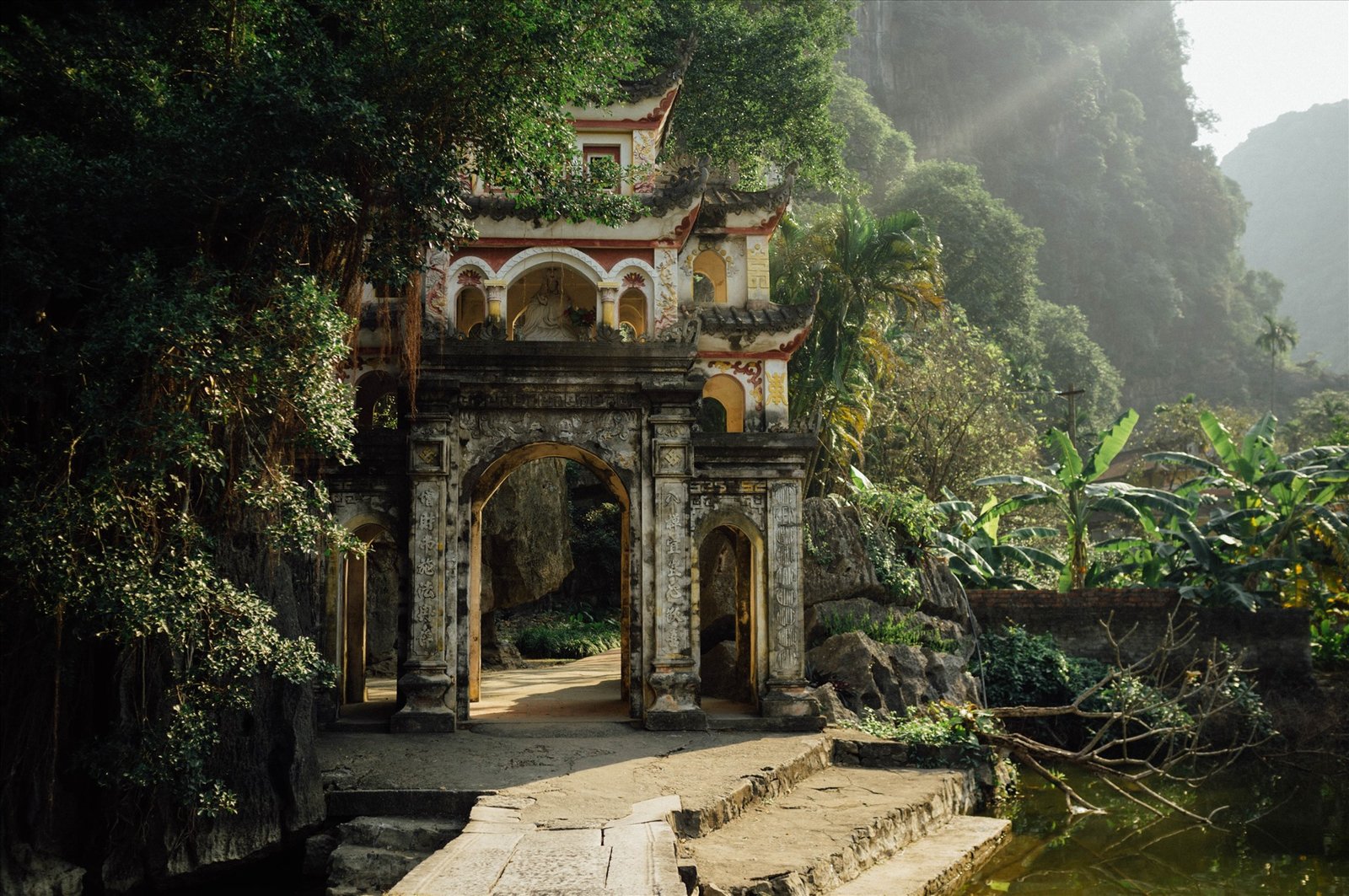
A Brief History of Bich Dong Pagoda
Bich Dong Pagoda has a long and storied past that dates back nearly six centuries. It was originally founded in 1428, during the early years of the Later Le Dynasty, as a humble mountain shrine built to honor the Buddha amidst the dramatic limestone cliffs of Ninh Binh.
The site gained greater significance in 1705, when two Buddhist monks—Tri Kien and Tri The—arrived in the area and were inspired by its serene beauty. They undertook a major restoration of the temple, expanded its structure, and cast a large bronze bell, which still hangs in Dark Cave (Hang Toi) today. In 1709, they also engraved a stone stele to record their efforts and the spiritual significance of the site.
The pagoda’s fame reached new heights in 1774, when Lord Trinh Sam, a ruler of northern Vietnam at the time, visited Bich Dong. Enchanted by the scenery and the harmonious blending of nature and architecture, he gave it the name “Bích Động,” which translates to “Green Cave.” The name reflects the lush vegetation and emerald mountains surrounding the site.
To this day, Bich Dong Pagoda remains an active place of Buddhist worship and pilgrimage. Its weathered stone steps, hidden grottoes, and quiet shrines continue to attract not only spiritual seekers but also travelers in search of history, tranquility, and timeless Vietnamese culture.
Unique Architecture: A Three-Tiered Pagoda on a Limestone Mountain
What makes Bich Dong Pagoda stand out is its remarkable architectural layout, designed to follow the form of the Chinese character “Tam” (三)—which means “three.” This symbolic structure represents the Three Jewels of Buddhism: the Buddha, the Dharma (teachings), and the Sangha (community).
The pagoda is built directly into the side of a limestone mountain, with its three levels seamlessly integrated into the natural landscape:
- Lower Pagoda (Ha Pagoda)
Situated at the foot of the mountain, this first level is surrounded by peaceful lotus ponds, lush greenery, and ancient banyan trees. It’s the most accessible of the three and sets a tranquil tone for your visit. Visitors often pause here to admire the elegant façade and light incense at the altars.
- Middle Pagoda (Trung Pagoda)
Halfway up the mountainside, you’ll find this atmospheric sanctuary partially carved into a natural cave. As you step inside, you’re enveloped by the cool air, dim lighting, and echoing chants—a setting that feels otherworldly. It’s a perfect spot for prayer, meditation, or simply taking in the quiet beauty of the cave’s stalactites and statues.
- Upper Pagoda (Thuong Pagoda)
Reaching the final tier involves a short but steep climb up ancient stone steps. Nestled near the mountain’s peak, the Upper Pagoda rewards those who make the ascent with panoramic views of Tam Coc’s emerald rice fields, winding rivers, and jagged peaks. It’s the spiritual and physical high point of the journey—an ideal place to pause, reflect, and soak in the landscape.
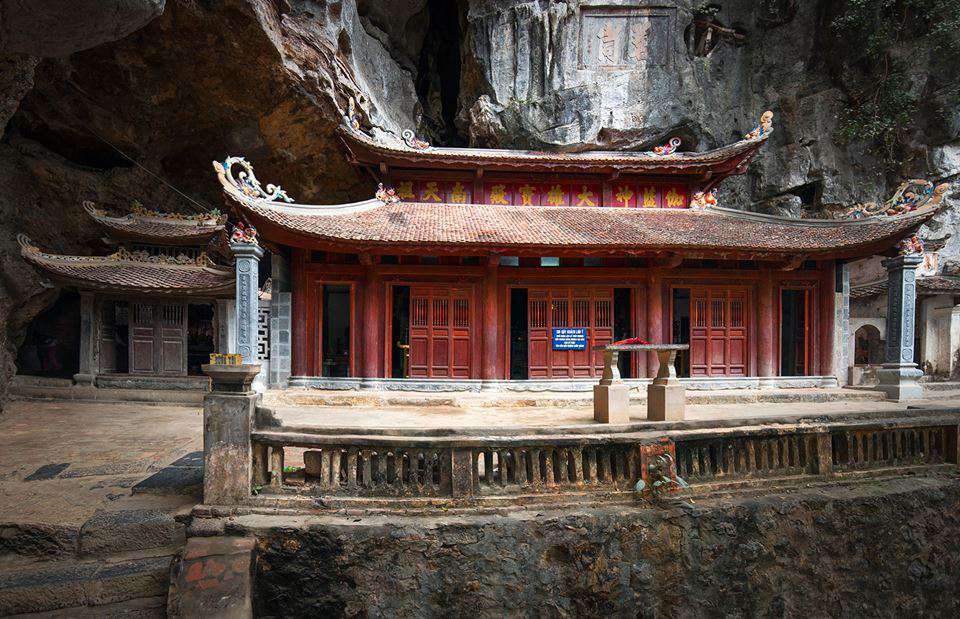
Best Time to Visit Bich Dong Pagoda
Bich Dong Pagoda is beautiful year-round, but each season offers a unique charm that transforms both the temple and its natural surroundings:
🌸 Spring (March):
The cliffs surrounding the pagoda come alive with blooming red kapok flowers—a stunning contrast against the gray limestone. The weather is mild, making it ideal for both spiritual reflection and outdoor exploration.
🌿 Early Summer (May–June):
This is lotus season. The ponds at the foot of the mountain fill with fragrant pink blossoms and wide green leaves, creating a tranquil and photogenic atmosphere. It’s one of the most popular times for couples and photographers to visit.
📸 Autumn (September):
Golden rice fields stretch across the valley below, offering some of the best photography opportunities in the Tam Coc region. The air is cool and the skies are usually clear—perfect for hiking up to the Upper Pagoda and enjoying panoramic views.
🧘 Winter (December):
Though the weather can be chilly and misty, winter offers peaceful solitude. The fog adds a mystical layer to the landscape, making the cave temples feel even more sacred. Fewer tourists means you can enjoy the quiet ambiance almost to yourself.

Things to Do at Bich Dong Pagoda
Bich Dong Pagoda isn’t just a historical site—it’s a spiritual and scenic sanctuary where visitors can connect with Vietnam’s culture, nature, and inner peace. Here’s how to make the most of your visit:
🕯 Offer Incense and Prayers
Step inside each tier of the pagoda and experience the quiet reverence of Vietnamese Buddhism. Light incense, bow in respect, and join locals in offering prayers for health, peace, and good fortune. It’s a meaningful way to engage with the spiritual heart of the site.
📸 Enjoy the View
Don’t forget your camera. From the Upper Pagoda, you’ll be treated to sweeping views of rice paddies, lotus ponds, and jagged karst peaks. Early morning or late afternoon provides the best light—and the least crowds—for unforgettable photos.
🎁 Buy Local Souvenirs
Just outside the pagoda entrance, you’ll find small stalls selling Buddhist charms, incense, postcards, and handcrafted goods from Ninh Binh’s artisans. Supporting these vendors helps preserve local craftsmanship—and you might find a thoughtful keepsake.
🧘 Meditate or Rest by the Lake
Near the Lower Pagoda is a small lotus lake, shaded by ancient trees and framed by limestone cliffs. It’s an ideal spot to sit in silence, meditate, or simply rest after your climb. Let the sounds of nature and the scent of incense guide you into a moment of calm.
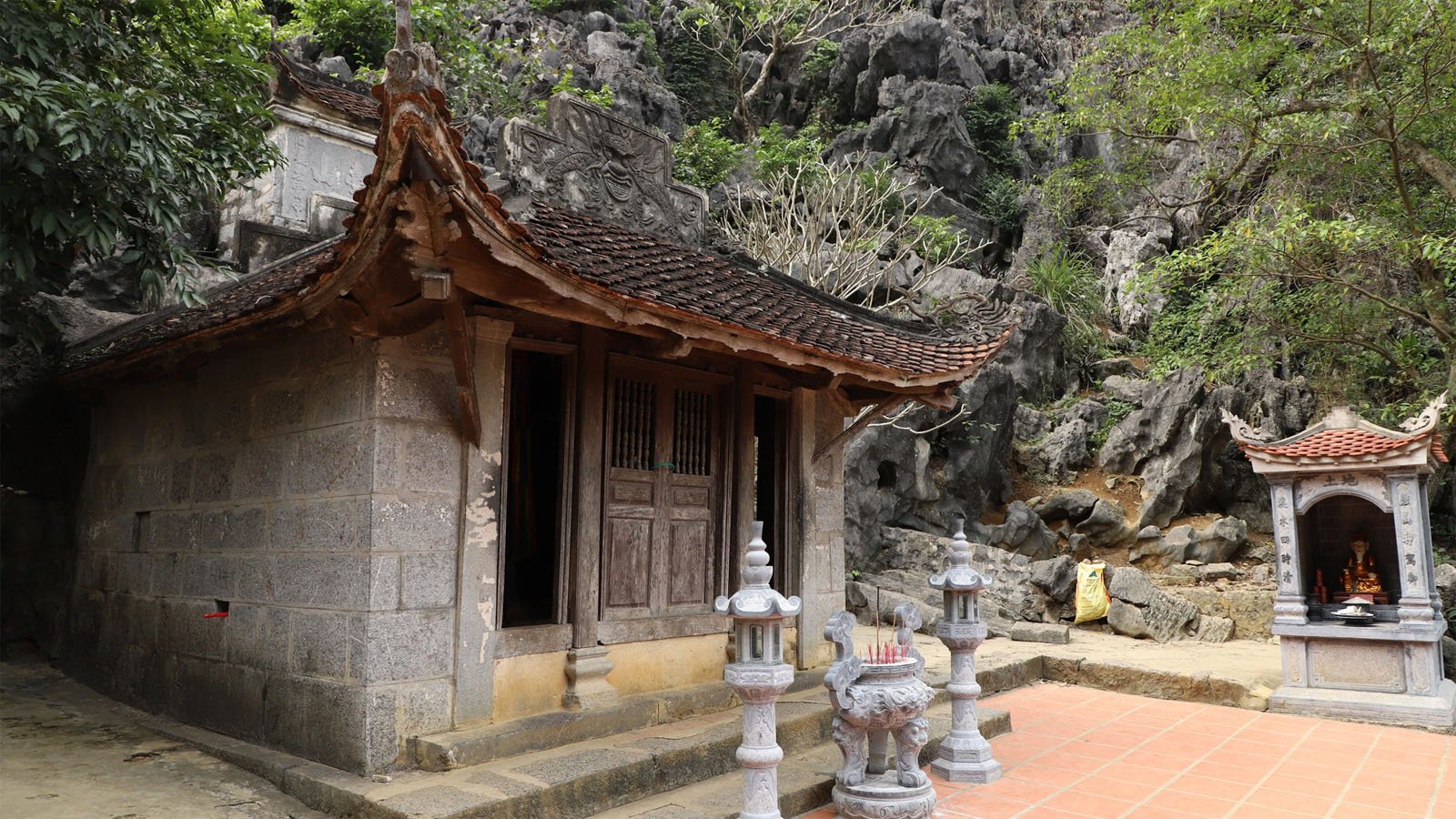
Practical Travel Tips for Visiting Bich Dong Pagoda
To make the most of your visit to this peaceful and photogenic site, keep these practical tips in mind:
🚴 Getting There
The easiest and most scenic way to reach Bich Dong Pagoda is by renting a bicycle or motorbike from Tam Coc. The ride takes 20–30 minutes and winds through rice paddies, limestone karsts, and charming countryside lanes. It’s a journey worth savoring.
🙏 Dress Modestly
As a place of worship, Bich Dong Pagoda requires respectful attire. Be sure to cover your shoulders and knees, especially if you plan to enter the temple halls or participate in incense offerings.
👟 Footwear Matters
The pagoda involves climbing stone steps and navigating uneven terrain, particularly at the Middle and Upper levels. Wear comfortable, non-slip shoes to stay safe and comfortable during your visit.
⏰ Avoid the Crowds
For a quieter, more contemplative experience, arrive early in the morning or visit on weekdays. Weekends and holidays can draw tour groups, which take away from the site’s tranquil atmosphere.

Nearby Attractions in Ninh Binh (Within 10 km of Bich Dong Pagoda)
Exploring Bich Dong Pagoda is just the beginning—this scenic corner of Ninh Binh offers several other must-see spots within a short distance. Here are four top attractions to consider adding to your itinerary:
🚣♀️ Tam Coc (3 km)
Often called “Ha Long Bay on land,” Tam Coc features serene boat rides along a winding river through lush rice paddies and dramatic limestone cliffs. A local rower guides your boat using both hands and feet—a uniquely Vietnamese experience.
🕊️ Thung Nham Bird Park (6 km)
A hidden gem for nature lovers, this park is home to over 40 species of birds, including herons, storks, and egrets. The best time to visit is late afternoon, when thousands return to nest. Caves, orchards, and wetlands round out the adventure.
⛰️ Hang Mua (8 km)
Climb 500 stone steps to the top of this karst peak for a breathtaking view of the Tam Coc valley below. Come at sunrise for magical lighting and fewer crowds. At the summit, you’ll find a stone dragon sculpture guarding the ridge.
⛩️ Thai Vi Temple (7 km)
Tucked into a quiet valley, Thai Vi Temple honors kings of the Tran Dynasty who once ruled Vietnam. The temple’s peaceful setting and traditional architecture, surrounded by limestone cliffs, make it a serene stop for history and culture lovers.
Final Thoughts
Bich Dong Pagoda is more than just a spiritual site—it’s a peaceful retreat into nature and history. Whether you’re a culture enthusiast, a spiritual seeker, or a curious traveler, this enchanting destination near Tam Coc is not to be missed.




